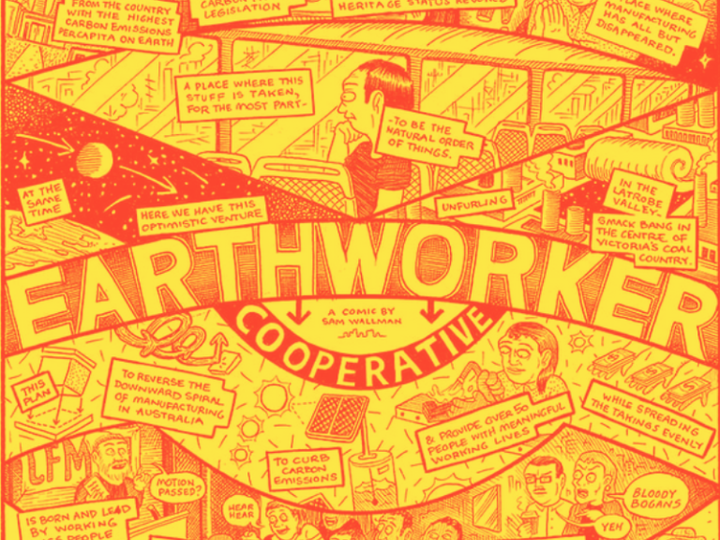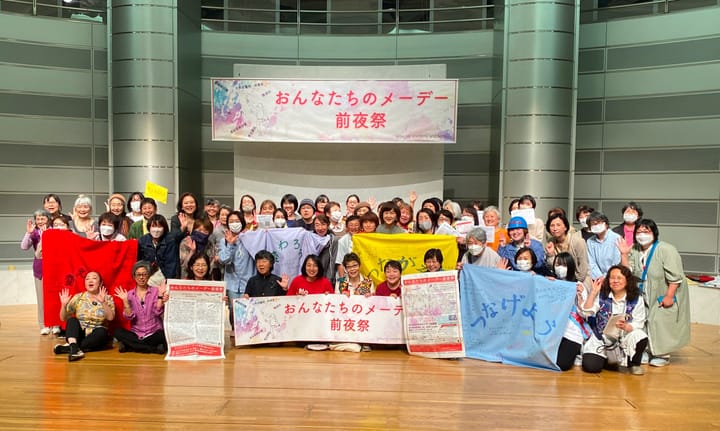Don’t Look Back; an asylum story with hard lessons for Japan

Gloria Onyekweli came to Japan just before Christmas in 2006, claiming asylum from her native Nigeria. She left her homeland after she said her fiancé, a political activist caught up in the Biafran separatist movement, was killed by the government. When she was told she was being sought by the Nigerian police, she fled the country, arriving at Narita via Hong Kong.
There followed a now familiar narrative. Gloria was interviewed by immigration officials then immediately transferred to the Ushiku Detention Center in Ibaraki, where she spent nearly a year. She was then granted karihōmen” or “provisional release” but cast into legal no-man’s land: forbidden to work or leave Tokyo, left dependent on charity and NGOs.
By the time I met Gloria about a decade ago, she had spent 30 months in detention. Like many detainees she claimed mistreatment: stories of being roughed up and bruised, of being refused medical treatment; of male guards entering her room late at night. Worst of all, she said, was the uncertainty. “Life outside was as bad because it was like detention without bars.”

In interviews, immigration officials denied these claims though they were broadly consistent with multiple stories by other detainees and observers. Kimiko Tanaka, an activist who has spent 25 years monitoring Ushiku, for example, noted two suicides in 2010, three deaths from illness (in 2014 and in 2017), and a suicide by an Indian national in 2018 the day after his request for provisional release was denied. There were hunger strikes, attempted suicides, cases of self-harm and multiple claims of medical problems being ignored.
In 2015, 14 people at a single detention center tried to kill or harm themselves. In 2017, two separate groups of detainees in Nagoya and Tokyo refused meals during a protest to demand an end to long incarcerations.
For years, the vernacular media took little interest in these stories. Last year, Gloria says she attended a session in the House of Representatives on Japan’s asylum session, hosted by a sympathetic liberal politician. Later, she says she called several journalists who had attended the session. “They told me Japan cannot change and I should return to my own country. I threw all their (business) cards away.”
They told me japan cannot change and i should return to my own country.
Gloria Onyekweli
The death of Sri Lankan woman Wishma Sandamali at a detention center in Nagoya this year has broken the silence. The 33-year-old visa overstayer passed away apparently in great pain in March, two months after demanding to see a doctor (immigration officials denied her request). In August, the Immigration Services Agency accepted criticism and issued unspecified punishments to four regional bureau officials.
The prospect of systemic reform, however, seems dim. An initial request by Wishma Sandamali’s family for the release of papers relating to her death was rejected. After repeated demands, immigration officials sent three cardboard boxes containing almost entirely redacted documents. A joint statement by four local human rights groups called the report “totally insufficient” in determining why Wishma died or in preventing a recurrence. The Japanese idiom ‘Kusai mono ni futa o shiro’ (put a lid on something that stinks) has rarely seemed so apt.
Japan’s government seems unfazed by criticism of its asylum system. Last year the country accepted 47 refugees – just 1.2% of those who applied. By contrast, France recognized over 18% of the 30,051 foreigners who sought asylum in 2019 and Germany took over a quarter of its applicants. Canada is among the most generous of all, taking in 55.7% of 27,168 asylum seekers.
Japan’s record is less stingy than it seems. Hundreds of applicants are allowed to stay on humanitarian grounds. Syrian students and family members have been quietly given visas. More refugees are brought in through resettlement programs. The tolerance level is way more than the raw figures would suggest, Dirk Hebecker, the UNHCR’s representative in Tokyo told me in 2018. Indeed, Japan may be happy to have that bald asylum figure publicized in the world’s media because it discourages all but the most determined.
I survive on charity here.
I can’t live like this.
Gloria Onyekweli
The problem, said Hebecker, is the lack of a clear immigration policy. “You need a strategy on how far you are prepared to let people in and right now they have a very narrow channel of very specific immigration, which also includes refugees.”
The justice ministry does not employ enough officials to gather and process information about asylum seekers and their countries of origin, said Eri Ishikawa, chair of the Japan Association for Refugees, a nonprofit organization. “Many claimants are being needlessly rejected,” she told me. While other rich countries have specialist branches of government to process refugees, complete with legal and language experts, in Japan the task is lumped together with immigration.
Despite years of debate, there seems little political will to lower the drawbridge. One reason is the belief that Japan is ethnically homogenous, a closed island nation that is wary of the social disruption mass immigration might bring. Under pressure from businesses amid an acute labor crunch, the government proposed expanding the category of skilled foreign workers allowed into the country for limited periods, but the numbers were small even before the plan was upended by the Covid pandemic.
Claimants such as Gloria end up stuck in limbo , unable to return home, or earn a living, subsisting on support from churches or other organizations, such as the government-affiliated Refugee Assistance Headquarters. International Social Services Japan, another nonprofit group, paid for her medical treatment (for diabetes) but always with the threat that they could run out of money.
Every two months, Gloria had to present herself to immigration authorities who could renew her temporary permission to stay or send her home (she applied at least four times for refugee status). Her greatest fear, she revealed, was being sent back to the detention center, where a friend had died in 2017. “I’m always afraid of something like that happening to me.” Her dream, she said in interviews, was to go to Canada and work as a caregiver. “I survive on charity here. I can’t live like this.”

In 2015, I wrote about her plight in The Economist and phoned a Canadian friend (John Harris), asking if he knew anyone at the Canadian Embassy in Tokyo. Last month, after years of work by John and other activists, Gloria finally arrived in the town of Kimberley, British Columbia, after being given permanent residence by the embassy. The first steps of her new life have been crowdfunded by friends; she lives in her own apartment and plans to get into caregiving work. She hopes to start applying for citizenship next year.
When The Globe and Mail interviewed Gloria before she stepped on a plane out of Japan she told the reporter she looked forward to being in a place where “my life is not limited again. I will have total freedom again. I can become human again.” The reporter asked Japan’s Immigration Services Agency to comment on her case. “An official declined to speak through an interpreter or arrange someone to answer questions in English.”


